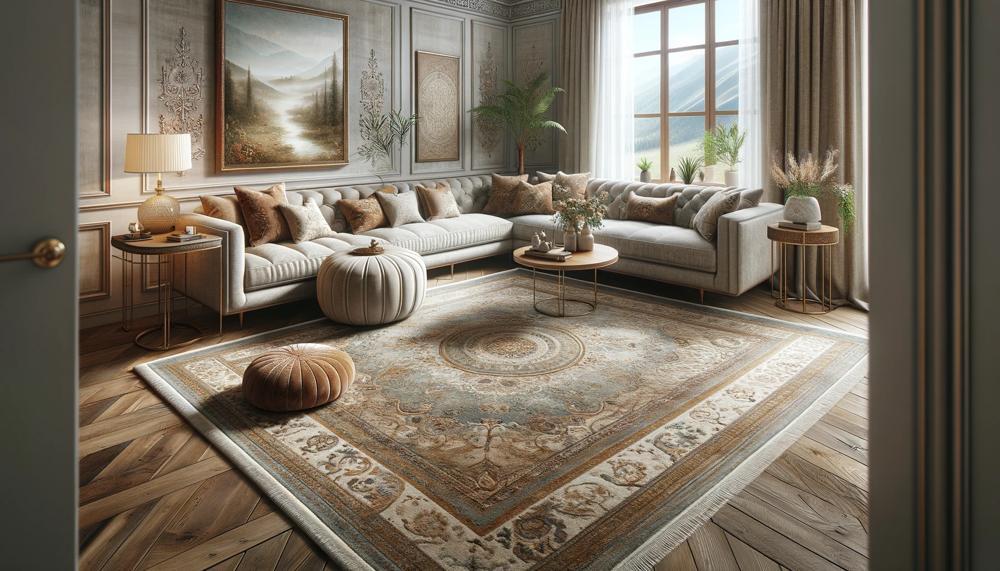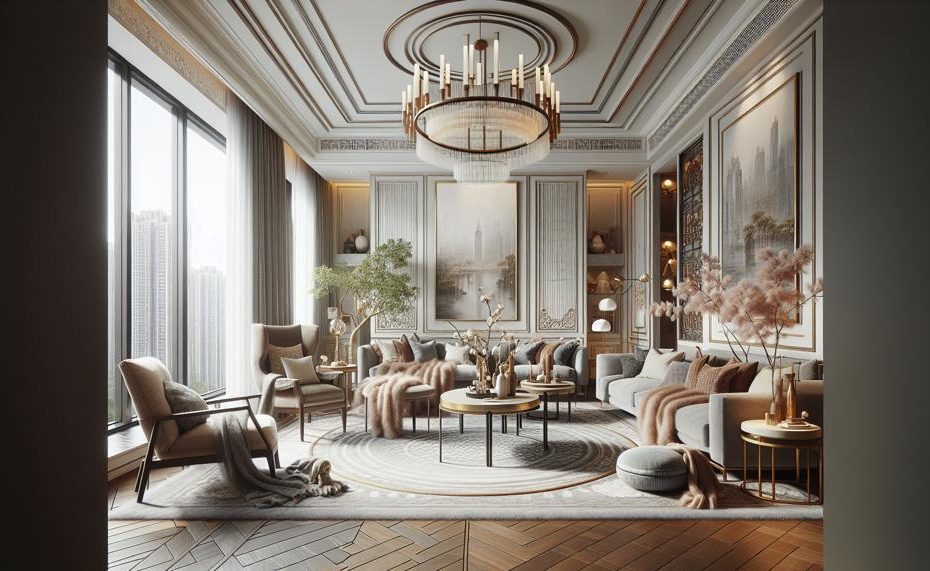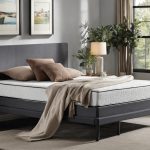Imagine walking into a stunningly decorated living room – the furniture is stylish, the wall art is vibrant, and the lighting is elegant. But something feels missing. It lacks that cozy and welcoming feeling that makes a house feel like a home. And then it hits you – there’s no rug in sight.
While rugs may seem like a small detail in home decor, they play a crucial role in creating an inviting atmosphere. Don’t believe me? Let me break it down for you with some bullet points:
- Rugs add texture and depth to a room, instantly making it feel more warm and inviting.
- They act as an anchor for furniture, defining the seating area and bringing harmony to the space.
- With endless patterns, colors, and styles to choose from, rugs can serve as a statement piece in any room.
- Not only do they provide comfort underfoot, but they also absorb sound, making your living room feel more peaceful.
- Rugs are also practical – they protect your floors from wear and tear, extending their lifespan.
- And let’s not forget – rugs are an affordable way to switch up the look of your living room without breaking the bank.
So, let’s get started.
Contents
Consider the Flooring In Your Living Room
The type of flooring in your living room has a significant impact on the need for an area rug. Let’s break down how different types of flooring can influence your decision:
- Hardwood floors: Hardwood floors are often accompanied by an area rug to add warmth, texture, and visual interest to the room. They also offer cushioning and sound absorption. However, if your living room is particularly spacious or open, a small area rug may not have enough impact.
- Carpeted floors: On the other hand, carpeted living rooms may not necessarily require an area rug. Short, flat, and dense carpet fibers can work well with an area rug, but longer or patterned carpets may clash with the rug and create a busy and cluttered appearance.
- Size and shape of the living room: The size and shape of your living room should also be considered when choosing an area rug. It’s crucial to select a rug that fits under all main furniture pieces in a balanced way. An area rug that is too small or doesn’t fit the space properly can make the room feel incomplete.
- Maintenance: Another essential factor to think about is maintenance. Area rugs require special care and cleaning compared to smooth floors. If your living room has high-traffic areas, you may need to clean the rug more frequently to keep it looking fresh and clean.

Ultimately, the decision to use an area rug in your living room should be based on personal taste and preference.
While they can add style and warmth to a room, they are not always necessary and may require more maintenance than smooth floors.
The Size Of Your Living Room Is a Large Factor
When it comes to deciding whether or not to incorporate a rug into your living room design, the size of the room plays a pivotal role.
Not only can it greatly affect the overall aesthetic and ambiance of the space, but it also has a significant impact on the functionality and purpose of the rug itself.
For instance, smaller living rooms may greatly benefit from having a rug as it can create the illusion of more space and add visual interest.
On the other hand, larger living rooms may not necessarily require a rug to achieve the desired look and feel.
Area Rugs Need Special Maintenance
To maintain the cleanliness and quality of your area rugs, special care is required. Regular vacuuming, rotating, and spot cleaning are essential tasks that can help extend the life of your rug and preserve its appearance.
Below are some vital tips for ensuring your living room area rug remains in top shape:
- Vacuum regularly: It is crucial to vacuum your rug at least once a week or every two weeks to eliminate any accumulated dirt, dust, or debris. Be sure to clean both sides of the rug to guarantee thorough cleaning.
- Rotate rugs: To prevent uneven wear and tear, it is important to rotate your rugs every six months. This is especially crucial for rugs that are exposed to direct sunlight, as it can cause fading and uneven wear.
- Spot clean stains: Keep a rug cleaner handy for quick and easy spot cleaning. Always use a cleaner specifically designed for area rugs and carefully follow the instructions.
- Shampoo the face of the rug: Periodically shampooing the front/face of your rug is essential to deep clean and remove any embedded dirt or stains. Use a gentle shampoo specifically made for area rugs.
- Proper storage: When not in use, store your rug in a well-ventilated and dry area to prevent mold and mildew growth. Avoid storing it in direct sunlight or damp areas.
Consider Your Preferences
When considering how to decorate your living room, adding a rug can bring both style and function to the space. However, determining if a rug is necessary for your living room ultimately depends on your personal preferences and unique style. Here are some factors to consider when making this decision:
- Aesthetic appeal: A rug can add texture, color, and pattern to your living room, enhancing its overall aesthetic. If you feel like your living room is lacking a certain visual element, a rug may be the perfect addition. This is especially true for those who appreciate the finer details and want to elevate the look of their space.
- Comfort and warmth: Rugs not only add an element of style, but also provide comfort and warmth to your living room. This is especially beneficial for those with hardwood or tile floors, as they help create a cozy and inviting atmosphere. After all, who doesn’t want their living room to be a comfortable place to relax?
- Noise reduction: Adding a rug can also help reduce noise in your living room, particularly if you have hardwood or tile floors. This can be especially useful if you have young children or live in an apartment building where noise can easily travel between units.
- Define the space: Rugs can also help define a space within an open-concept living room where there may not be clear boundaries between areas. By placing a rug under your furniture grouping, you can create a designated seating area within your larger living room space. This not only adds structure to the room, but also enhances its functionality.
- Personal preference: Ultimately, whether or not you want a rug in your living room is based on your personal preference and unique style. While some people prefer the look of hardwood floors without any rugs, others enjoy the added texture and warmth that a rug provides. It’s important to consider what you personally prefer in terms of design and comfort.
Conclusion
In conclusion, while a rug may seem like a small detail in home decor, it plays a crucial role in creating an inviting and cozy atmosphere in your living room. Not only does it add texture and define the space, but it can also serve as a statement piece that ties the room together.
Additionally, rugs provide comfort underfoot, absorb sound, and protect your floors from wear and tear. However, when considering whether to add a rug to your living room, it’s important to take into account personal preference and practical factors such as flooring type and room size.
It’s true that maintaining a rug can require extra effort, but the benefits outweigh the costs. Rugs are an affordable way to switch up the look of your living room and add warmth and character to the space.
So next time you step into a beautifully decorated living room, remember that even something as seemingly insignificant as a rug can make all the difference in creating a welcoming and comfortable home.





